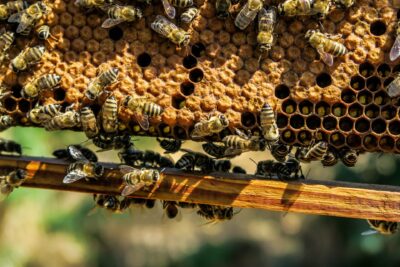October 1, 2024 Global Warming
The current climate is bee friendly.
Climate is not a problem for honey bees. +46% between 1990 and 2021

For years, climate alarmists have insisted that polar bears are in danger of extinction because of human-caused warming.
But real experts have shown that the latest estimate is 39,000, the highest ever recorded in history.
Now another important resource in our ecosystem, honey bees, are also experiencing a sharp increase in their population.
The headlines continue to paint a world on the brink of ecological disaster due to the disappearance of pollinating insects.
But while it is undeniable that there are real threats to bees, the mainstream is not telling the truth.
Bees are not declining, they are increasing.
Globally, the number of honeybee colonies has increased steadily over the past few decades.
According to the FAO, the estimated number of bees worldwide has increased by 46 percent between 1990 and 2021.
This is an extraordinary increase, so one wonders how the mainstream can continue to deceive the majority of the population.
Among other things, this trend is not limited to a few isolated regions.
Countries around the world, from Brazil to China, have seen significant increases in bee populations.
In Europe, the recovery has been more modest, with an increase of 11 percent between 1990 and 2021 ; in the Americas (North and South), the increase has been slightly stronger, about 20 percent.
Other regions have seen much stronger growth : Africa with 38 percent, the Oceania region around Australia and New Zealand with 90 percent, and Asia with 95 percent.
All this has led to the production of large quantities of honey for human consumption, with China, Iran and Turkey as the main players.
According to a 2022 study published in Nature, between 1969 and 2017, “there was an increase in the number of honey bee colonies (85 percent), honey production (181 percent), and beeswax production (116 percent).
Honey yield per colony improved by about 50 percent globally, with the greatest improvements in Asia and Europe, where it peaked at over 100 percent between 1961 and 2017”.
So where is the trick used by global warming fanatics ?
Scientists who promote the narrative of a large-scale global decline of bees and similar apocalyptic stories usually rely on research reports limited to one or a few countries with statistics calculated over a short period of time, taking advantage of an uninformed population, while also making use of journalists who are either completely ignorant of the subject or willingly lend themselves to deception.
Moreover, it is not unreasonable to assume that honeybees are also thriving thanks to the increase in CO2 that has made the Earth greener in recent decades.
A January 2022 paper presented evidence that the presence of forests within 2 kilometers of areas where bees live has a positive effect on their numbers.
Here is an excerpt from the paper :
“Because wild bees are highly dependent on forest patches as nesting habitat in agricultural landscapes, it is possible to attract more populations of pollinators by creating new forest patches”.
So it seems that climate is not a problem for honey bees.














